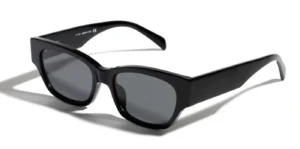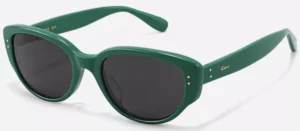Wearing sunglasses during the intense summer sunshine not only helps to block out harsh glare, but also protects your eyes from harmful UV rays and is considered fashionable. One of the most important qualities of sunglasses is their ability to provide protection against harmful UV rays. But How to tell if sunglasses have UV protection ?
Typically, sunglasses manufacturers will label their sunglasses as having UV protection during production, either with a tag or printed directly on the lens or temples of the glasses. Look for labels indicating UV 400 or 100% protection against UVA, UVB, and UVC rays.
To ensure the health of your eyes, it’s important to inquire about the certification and UV protection of the sunglasses you’re considering purchasing. Don’t hesitate to ask if the sunglasses have been certified by an authoritative organization.
If you’re unsure about the UV protection of your sunglasses, you can bring them to a glasses retailer or optometrist where professionals can assist you in determining if your glasses provide adequate protection against harmful UV rays.
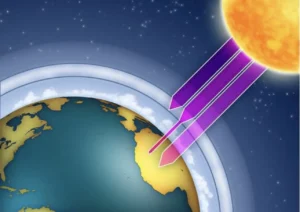
1.Why is UV sunglasses protection so important?
Under normal circumstances, our eyes have a certain range of adaptation to light intensity, adjusting the amount of light entering the eyes by changing the size of the pupil. In bright light, the pupil will shrink, reducing the amount of light entering the eye. However, if the light intensity exceeds the range that the human eye can adjust to, it can potentially cause damage to the eyes.
Exposure to UV radiation from the sun can harm your eyes and endanger your vision. Overexposure to UV rays is also associated with corneal sunburn, damage to retinal tissue, macular degeneration, and abnormal growth on the surface of the eye.

Excessive exposure to UV radiation can increase the incidence of pterygium and cataracts. As the intensity of UV rays increases, it can also cause corneal damage. Therefore, in addition to protecting our skin from the sun in the summer, it’s equally important to protect our eyes.
So, how can we protect our eyes from the sun? It’s actually quite simple – just use a sun umbrella or wear sunglasses when going outdoors. Especially high-quality sunglasses can effectively block out UV rays and reduce light intensity, thus protecting our eyes.
When should we wear sunglasses? During the day, when outdoors, even on cloudy days, it’s important to wear sunglasses. Although clouds can block some visible light, they cannot prevent harmful UV rays from reaching the surface of the earth.
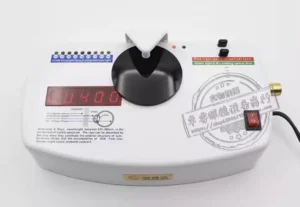
2. What are the standards for UV protection in sunglasses?
It’s important to understand the types of UV rays. UV rays are classified into three types: UVA, UVB, and UVC, with UVC being absorbed by the atmosphere and not causing harm to the human body. UVA and UVB, on the other hand, can cause harm to our eyes and skin. Therefore, the UV protection standard for sunglasses mainly focuses on UVA and UVB.
The UV protection standard for sunglasses is usually indicated by “UV400”. This standard means that the sunglasses can filter out UV rays with wavelengths of less than 400 nanometers, including UVA and UVB. When choosing sunglasses, it’s important to ensure they meet the UV400 standard.
There are currently three main standards for UV protection in sunglasses
(1)Australian Standards for UV Protection of Sunglasses
- The Australian Standard is the first national/regional standard in the world to establish a rating system for UV protection in sunglasses. It is divided into five levels based on lens transmittance, with Level 0 being the weakest, providing partial UV protection and glare reduction, and Level 4 being the strongest, offering the most complete filtering of UV rays and glare reduction but not suitable for driving.
(2)European standard for UV protection of sunglasses
- The European Standard is divided into four levels. “0” indicates insufficient UV protection, “2” indicates adequate UV protection, “6” indicates excellent UV protection, and “7” indicates “total” protection, allowing no more than 5% of UV rays to pass through the lenses. Lenses that meet this standard are allowed to display the “CE” mark, making it easier for consumers to choose.
- The European Standard also requires frames to be printed with a classification number, such as Cat.4. Classification 0 has a transmittance rate of 80%-100% and is suitable for fashion or indoor use. Classification 1 has a transmittance rate of 43%-80% and is suitable for use in low sunlight.
- Classification 2 has a transmittance rate of 18%-43% and is suitable for medium sunlight intensity.Classification 3 has a transmittance rate of 8%-18% and is suitable for use in strong sunlight, on water, or in snow. Classification 4 has a transmittance rate of 3%-8% and is suitable for use in specialized settings such as high mountains or glaciers, but not for driving.
(3)U.S. Standards for UV Protection of Sunglasses
- The US standard is developed by the US Food and Drug Administration (FDA), and the lens transmittance of sunglasses under the US standard is divided into three levels.
- According to the US standard, the lens transmittance and visible light transmittance that should not be exceeded for each level of sunglasses should be ensured. During high-speed testing, a 1/4 inch (6.35 millimeters) steel ball is fired at the lens at a speed of 150 feet per second (45.72 meters per second), and the lens must pass both tests without any part of the lens touching the eye.
In addition, sunglasses with larger lenses or wrap-around frames can provide better protection against UV rays from all angles.
The bottom line is that checking the label when purchasing new sunglasses is crucial to ensure that you are getting 100% UV protection.
3. What color sunglasses have better UV protection?
The darkness of sunglass lenses only affects their visible light absorption performance and is not related to their UV protection ability. UV protection depends on the lens material, not the darkness of the color. Even clear optical lenses can absorb UV rays. Sunglass lenses with UV protection have a special coating that directly affects their effectiveness against UV rays.
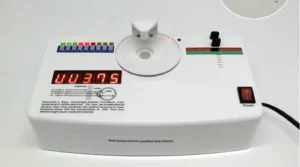
Wearing dark lenses may actually increase the risk to your eyes. When you wear dark sunglass lenses, your pupils dilate, allowing more light to enter the back of your eyes than when you are not wearing sunglasses at all. If you prefer darker or heavily tinted lenses, make sure they also provide UV 400 protection.
(1)UV protection effect of black lenses
Black lenses are the most common type of sunglasses and offer the best protection against strong light. However, because of their strong blocking ability, things around you may look darker when wearing them. If the sunlight is not strong, it is not recommended to wear sunglasses in this color.
(2)UV protection effect of blue lenses
Blue is a popular sunglass color. Blue lenses can effectively filter out the light reflecting off the sea and the sky, but unfortunately, their ability to resist UV rays is weak. If you want to wear blue sunglasses at the beach to match the blue sea and sky, it is best to choose a time when the sunlight is not very strong.
(3) UV protection effect of pink lenses
Pink lenses can absorb some UV rays and some short-wavelength visible light, but their ability to block sunlight is not very strong. Therefore, pink sunglasses are more of a fashion accessory.
(4) UV protection effect of green lenses
Green lenses give a cool and comfortable feeling, making them suitable for people with tired eyes. However, green lenses can produce some color distortion, making them unsuitable for drivers as they may have difficulty distinguishing red and green traffic lights.
(5) UV protection effect of brown and gray lenses
Compared to other colors, brown and gray lenses can more evenly absorb the visible light spectrum, making things darker but without producing color distortion. They can clearly distinguish colors and are a relatively “universal” type of sunglasses.
In summary, the darkness of sunglass lenses is not related to their UV protection ability. When choosing sunglasses for UV protection, do not rely on the darkness of the lenses but rather check the UV index to determine their UV protection strength.
4. How to Test Sunglasses for UV Protection
Optometrists or eye care professionals at glasses stores can use a photometer to test your sunglasses in just a few seconds and accurately tell you how effective they are at protecting against UV rays.
If you have a UV flashlight (or counterfeit detector pen), you can also try a simple test at home. Shine the UV flashlight on a piece of paper currency, and any fluorescent fibers on the paper should glow under UV radiation.
Note that if the UV beam still causes the fibers to glow even after passing through your sunglass lenses, then you’ll know that your sunglasses are not providing sufficient UV radiation protection.
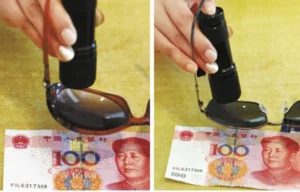
Finally, I hope that through the above explanation, everyone understands how to tell if sunglasses have uv protection and can purchase satisfactory sunglasses with UV protection.
